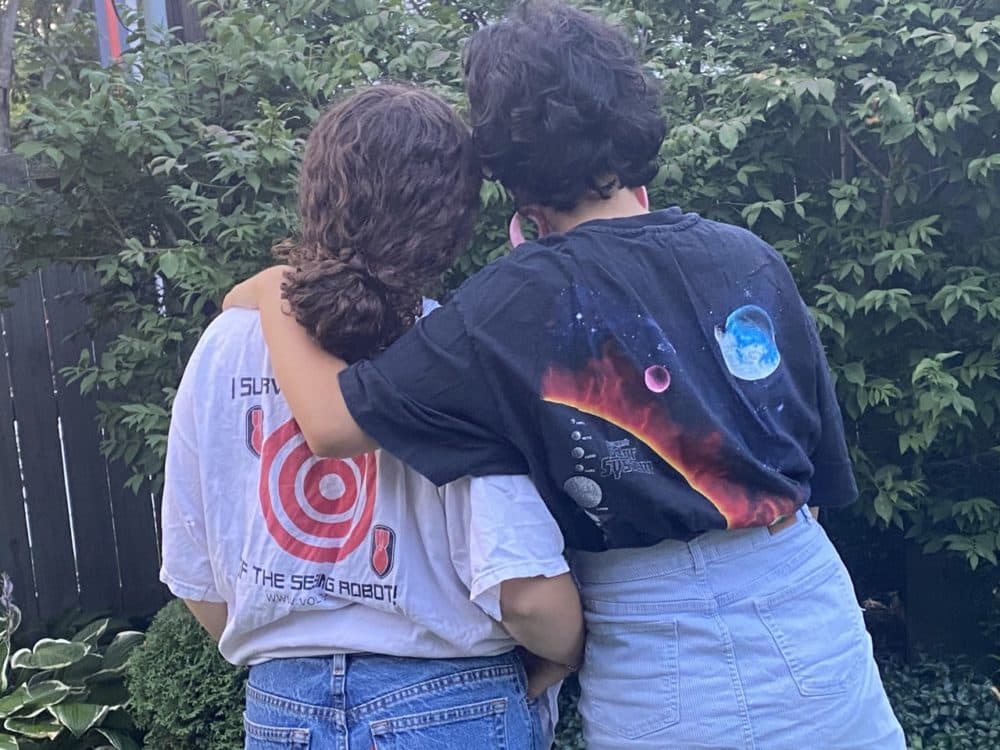Advertisement
Commentary
Love alone can’t prevent suicide

“She loved you so much she would not have left you.”
It’s a line that jarred me near the end of the new HBO documentary, “Adrienne,” about the life and terrible death of Adrienne Shelly, the actor and director who wrote the original screenplay for “Waitress.” Shelly’s body was found hanging in the shower of her Greenwich Village office apartment in 2006. After strangling her during a botched robbery, Shelly’s killer told a judge he attempted to make her death, at age 40, look like a suicide.
“Adrienne,” directed by her still-distraught widow Andy Ostroy, is a celebration of Shelly’s legacy as an artist and mother; the couple’s daughter, a thoughtful, spunky teenager in the film, was 2 when Shelly died.
I was eager to watch the documentary. My two daughters and I loved “Waitress” in all of its iterations — the film, delicious with personality-laden pies and Keri Russell’s pre-“Americans” innocence; the play, when it opened at the A.R.T. in our Cambridge neighborhood; and on Broadway, with Sara Bareilles’ gorgeous score. We cried in the theater and belted “She Used to be Mine” on the long car ride home.
But I found myself growing increasingly distressed as the narrative unfolded. Despite the true cause of Shelly's death, the topic of suicide recurs throughout the film, and the gist is essentially this: Shelly was so happy, she could not have killed herself; Shelly loved her life, her work, her family and friends so much, suicide was an impossibility. And then, that line, in which Ostroy tells his daughter, Sophie, why he was so certain that her mother did not die by suicide: “She loved you so much she would not have left you.”

My husband also loved our daughters so much. Still, in 2014, he died by suicide, when they were 8 and 11 years old. If love alone could prevent such deaths — more than 45,000 last year in the U.S. — many more fathers and mothers and children and siblings would still be alive.
The distorted logic that suicide is a personal, even selfish, whim based on some kind of external happiness quotient remains pervasive, despite efforts over decades to destigmatize this most confounding manner of death. Even a change in language — the widespread push toward stating a person “died by suicide” rather than “committed suicide” to underscore that this is not a criminal act, or sin, but an illness, like a fatal cancer or a massive stroke — has done little to reframe the debate.
The vast majority of suicides involve people with some manner of mental illness; major depression, bipolar or substance-abuse disorder is often at play. Sometimes, there’s no clear-cut diagnosis, just a deep psychological conflict that turns deadly. My husband was never diagnosed with any serious mental illness, but I am sure that illness — possibly undiagnosed bipolar, certainly escalating anxiety and depression he’d masterfully hidden — was the cause of his death.
Daniel Brenner, a Cambridge-based psychiatrist and psychoanalyst (and a high school classmate of mine) told me that self-harm, sometimes irreversible, can be a “symptom” of this type of disease. “It’s not anyone’s choice,” Brenner said. “It’s outside the realm of choice, like a fatal heart attack.” He added: “There are behaviors that look like choices that don't take into account how biologically determined they are.” Moreover, he said, suicide remains so incomprehensible, there’s a tendency to view it as a personal failure, the ultimate selfish act, a refusal to fight for life. “It’s kind of like saying someone in a burning building is a failure because they jumped," he said. "We’re talking about a kind of suffering that is, for the most part, outside the realm of anyone else’s experience.”
If love alone could prevent such deaths — more than 45,000 last year in the U.S. — many more fathers and mothers and children and siblings would still be alive.
None of this means my husband did not love deeply. He loved his parents, two brothers, legions of cousins, aunts and uncles, and, most dearly, his daughters. Seth was the dad who lingered in our children’s classrooms when they were small, reading them books and tackling puzzles long after the other parents had left for work. Once, another mom, noting the many mornings Seth hung out at school, asked: “Does he have a real job?” Well, yes, and a big one: he was a beloved robotics professor at MIT, bringing teams of students together to develop smarter technologies, like robots to clean up toxic sites and sensor-rich wearables for people who are blind, and other devices to help those with disabilities better navigate the world.
Seth was not thinking of his groundbreaking work, nor our 12-year strong marriage, nor the children on the day he died. Experts describe a kind of tunnel vision that overcomes individuals in a suicidal state. Seth, I imagine, was thinking only of ending his own pain, which he perceived to be unfixable.
There’s a “blind necessity” to extinguishing such torment, the author William Styron wrote about his ongoing struggle with depression. Kay Redfield Jamison, the well-known psychologist who wrote the foundational, “Night Falls Fast: Understanding Suicide,” explained suicidal depression as “a state of cold, agitated horror and relentless despair,” in which “the things that you most love in life leach away.” Jamison did not consider her own suicide attempt “a selfish or not-selfish thing to have done.” It was, she writes, “simply the end of what I could bear, the last afternoon of having to imagine waking up the next morning only to start all over again with a thick mind and black imaginings. It was the final outcome of a bad disease, a disease it seemed to me I would never get the better of. No amount of love from or for other people — and there was a lot — could help.”
In the end, of course, both Shelly and my husband are gone. What matters most is not how they died, but how brilliantly they lived — an artist and an engineer, each illuminating the world with their unique contributions, and leaving behind children who should know, without a doubt, they were loved.

For more resources, visit the National Suicide Prevention Lifeline, the Samaritans Statewide Hotline and Now Matters Now.
